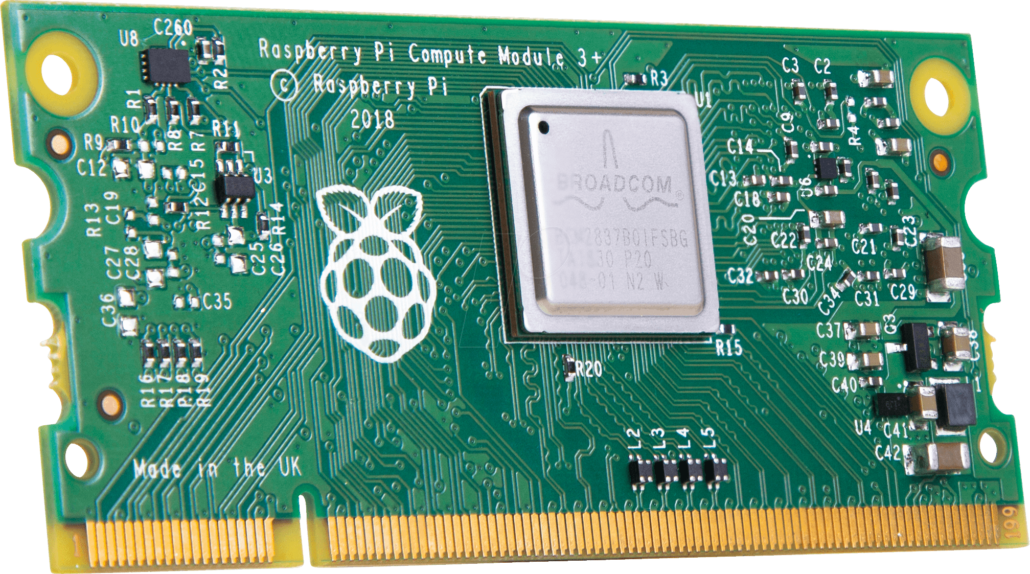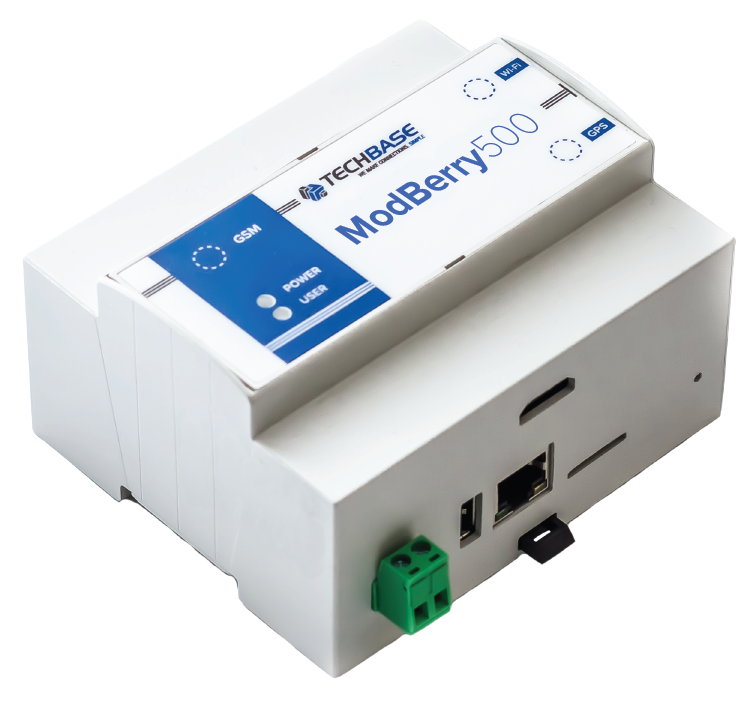A day ago, Raspberry Foundation announced new member of its family, a Rasbperry Pi Compute Module 4. It’s quite obvious, even from the first look, that the new module is very different from its predecessors. Main difference is a new form factor, leaving DDR2 SODIMM in the past.
The same 64-bit quad-core BCM2711 application processor as in Raspberry Pi 4B, the Compute Module 4 brings higher performance: faster CPU cores, better multimedia, more interfacing capabilities, and, for the first time, a choice of RAM densities and a wireless Wi-Fi and Bluetooth connectivity options.
Compute Module 4 comes in 32 variants. Lite, as always, offers no eMMC memory, a and standard versions come with up to 8GB RAM, 32 eMMC Flash and wireless modem.

New features of Compute Module 4
- 1.5GHz quad-core 64-bit ARM Cortex-A72 CPU as in Raspberry Pi 4 version B
- 1GB, 2GB, 4GB or 8GB LPDDR4-3200 SDRAM
- 8GB, 16GB or 32GB eMMC Flash storage for Standard version, Lite version without eMMC
- Optional 2.4GHz and 5GHz IEEE 802.11b/g/n/ac wireless LAN and Bluetooth 5.0
- Single-lane PCI Express 2.0 interface
- Gigabit Ethernet PHY with IEEE 1588 support
- Dual HDMI interfaces, at resolutions up to 4K
- 28 GPIO pins, with up to 6 × UART, 6 × I2C and 5 × SPI
Source: https://www.raspberrypi.org/blog/raspberry-pi-compute-module-4/
Compute Module 4 cutting edge in Industrial IoT
Few months ago IoT Industrial Devices predicted a possible release date for Compute Module 4 in Standard and Lite version:
First Rasbperry Pi 1B model had it’s analogy in industrial Compute Module 1 after almost 2 years from it’s premiere. Compute Module 2 was probably omitted because the change from RPi1 to RPI2 mainly involved a minor change of the processor (Cortex-A7 900MHz), which was almost immediately replaced with Cortex-A53 1.2GHz in Raspberry Pi 3.
The premiere of Compute Module 3 occured a year after RPI 3 announcement, providing a significant boost of industrial market solutions. Since Raspberry Pi 4 was a great success in 2019, we might see it’s equivalent in industrial series of Raspberry Pi – Compute Module 4. A possible release date of Raspberry Pi’s Compute Module 4 is mid-2020.

Raspberry Pi is gaining recognition in Industry
Almost a year ago, in the beginning of 2019, Raspberry Pi Foundation presented Raspberry Pi Compute Module 3+, a successor to previous CM3 version of development board, aimed at businesses and industrial users. The Compute Module uses a standard DDR2 SODIMM (small outline dual in-line memory module) form factor. GPIO and other I/O functions are routed through the 200 pins on the board.
Only a few months later, in June 2019, came big premiere of Raspberry Pi 4 Model B, the long-awaited successor of customer RPi3+. With new processor, larger RAM options and many input/output changes, became new standard in small, embedded PC world.

It seems a matter of time before the Raspberry Pi Compute Module 3+ will get its own successor, probably called Compute Module 4, a new milestone of professional embedded IoT module. What might be the specification of this highly expected development board?
Industrial use of Compute Module
With Compute Module 3+ options from Raspberry Pi, TECHBASE upgraded their ModBerry 500/9500 industrial computers. From now on the ModBerry 500/9500 can be supported with extended eMMC, up to 32GB. Higher memory volume brings new features available for ModBerry series.
Higher performance of ModBerry 500/9500 with extended eMMC flash memory, up to 32GB , powered by quad-core Cortex A53 processor allows the device to smoothly run Windows 10 IoT Core system, opening up many possibilities for data management, remote control and visualisation.



